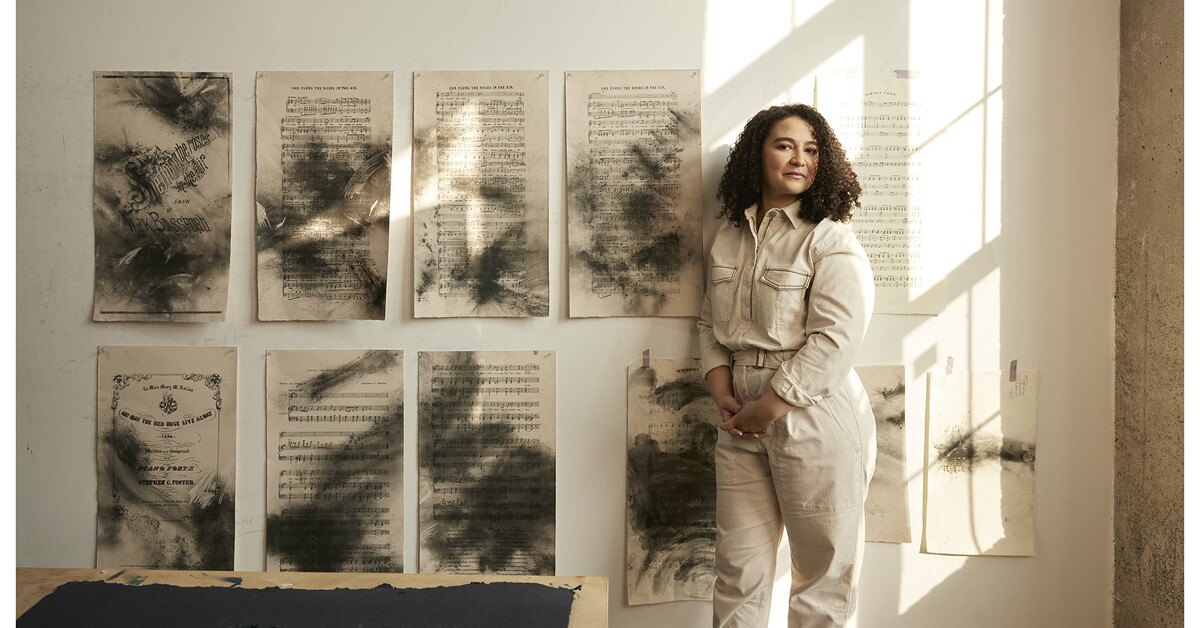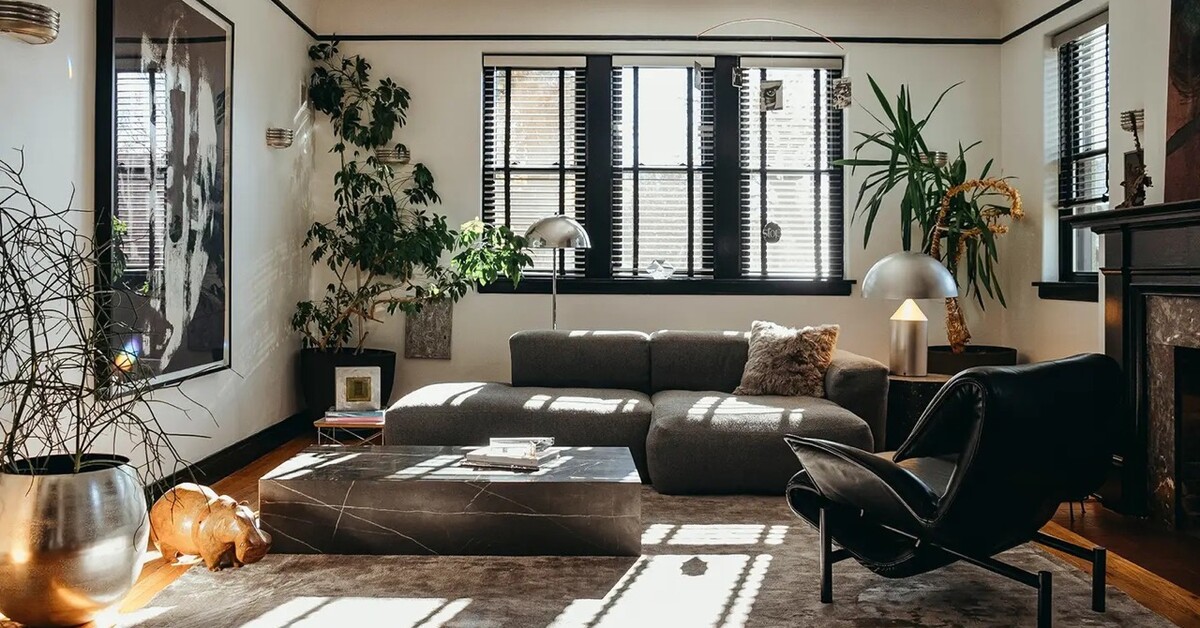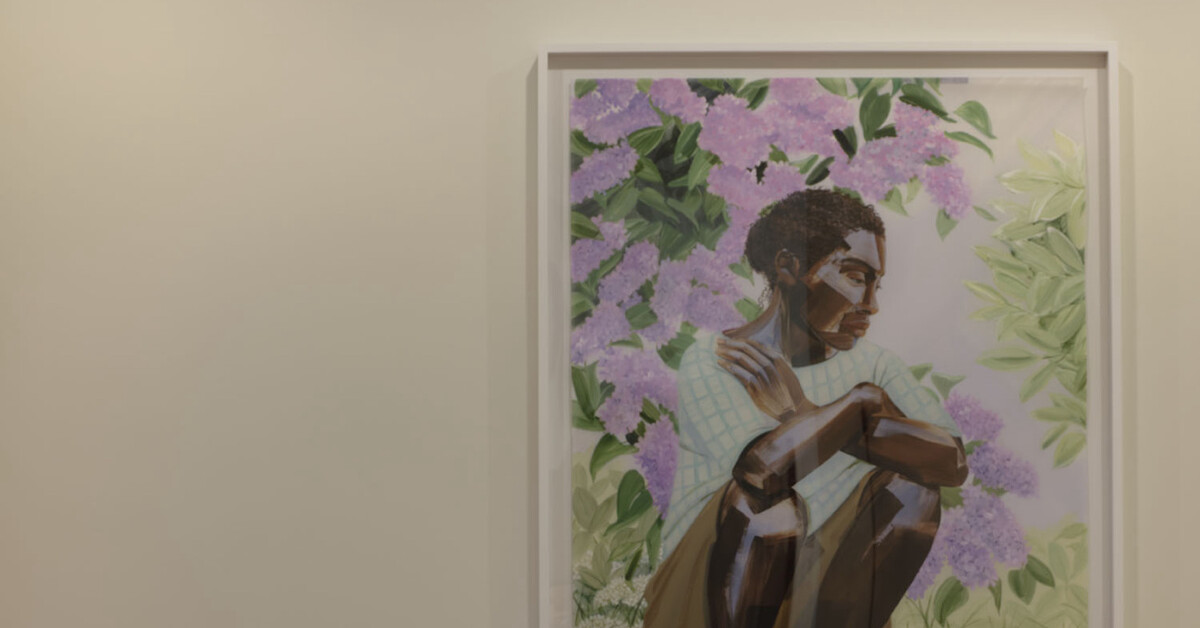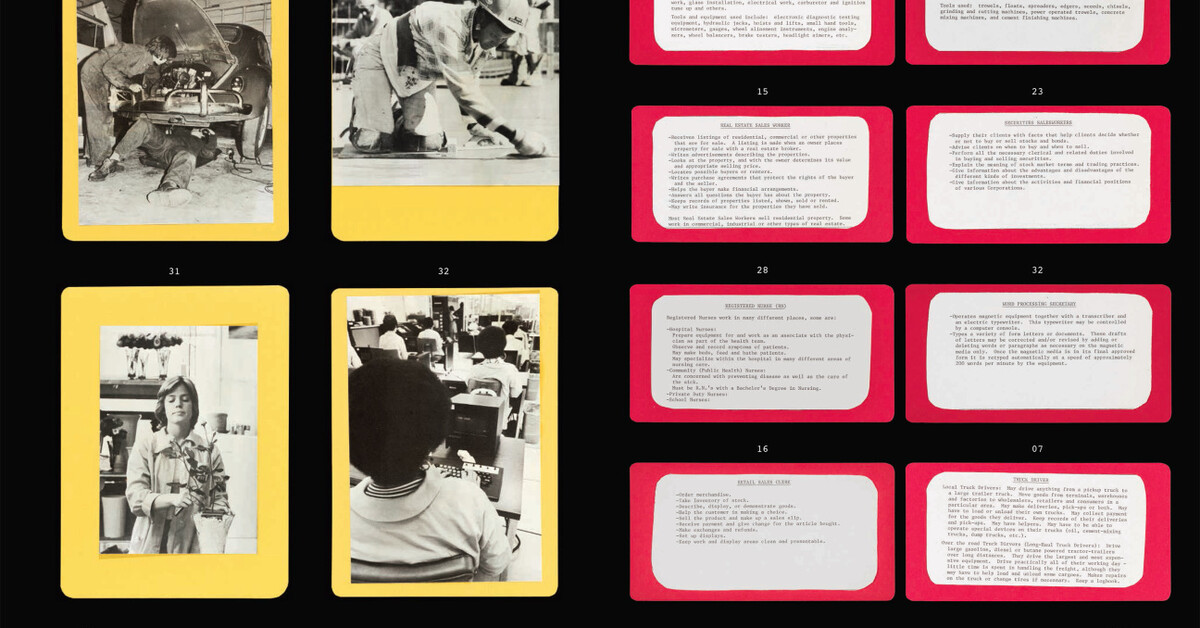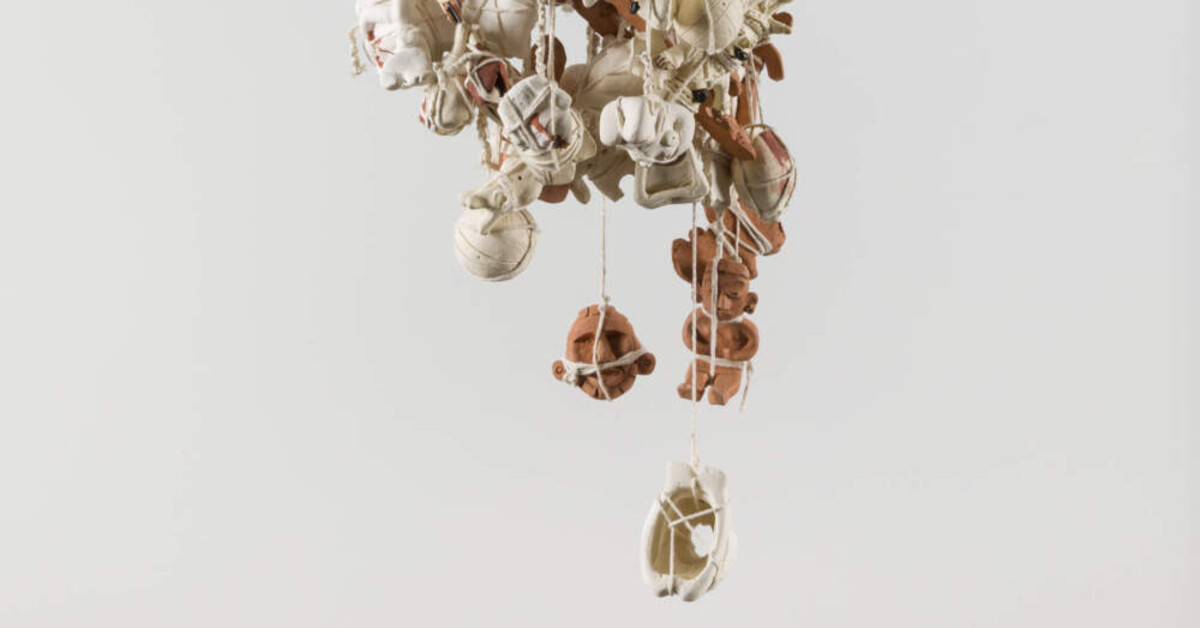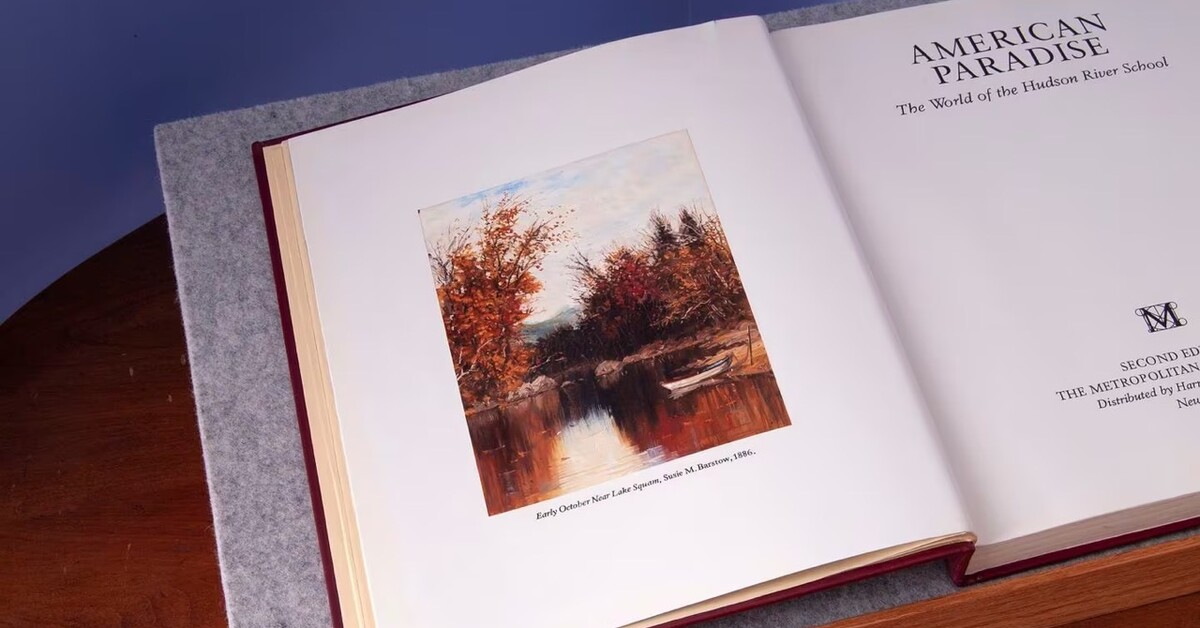Jennie C. Jones Nocturnes
c mag / Dec 14, 2022 / by Gervais Marsh
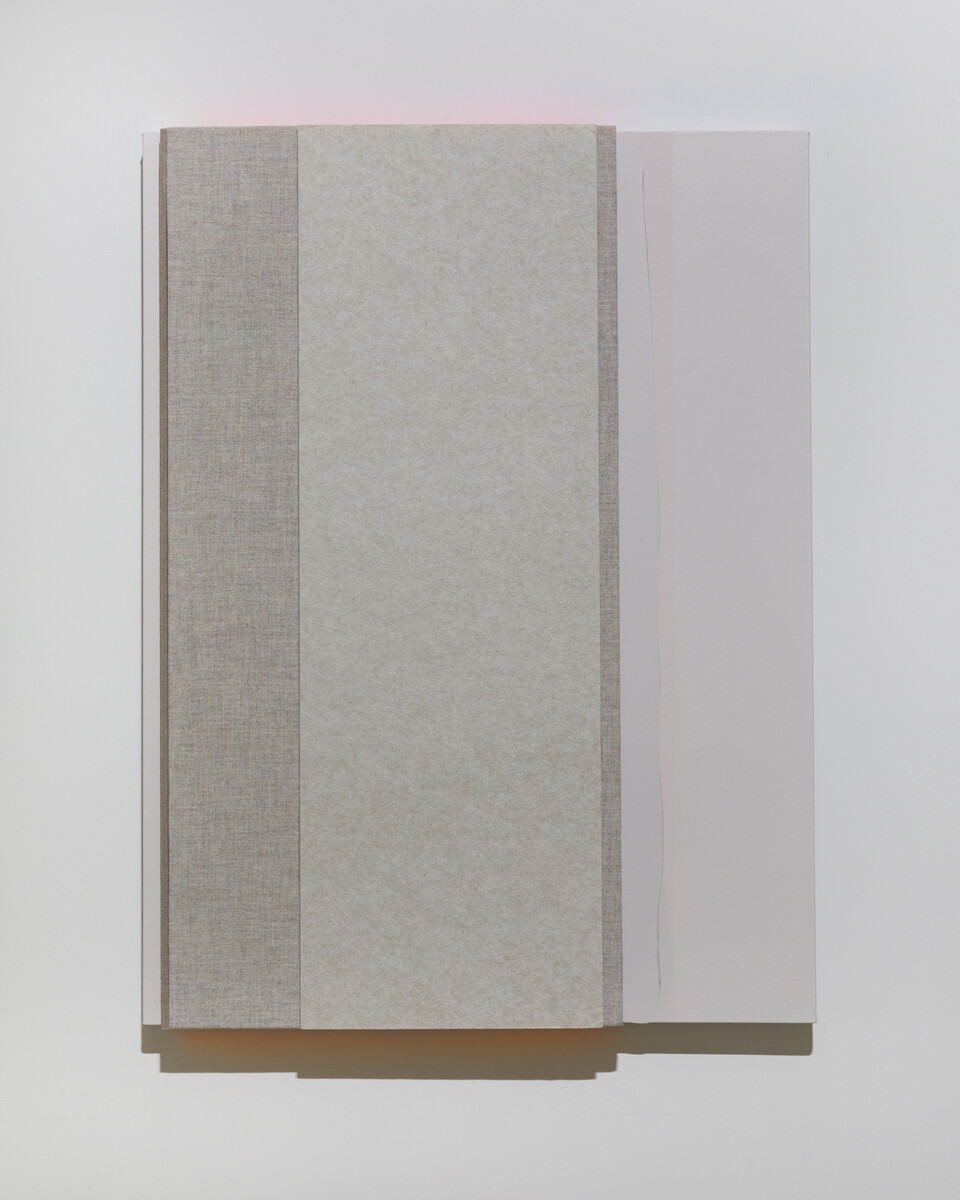
Jennie C. Jones, Dawn Hum, 2022
What viewing and listening practices does Jennie C. Jones encourage in “Nocturnes” (2022)? I have been meditating on this question since my first visit to the show, recently on view at Chicago’s PATRON Gallery. In the painting Red, Tone #6 (2021), my eyes trace the subtle gestural marks made from slight accumulations of scarlet acrylic paint, some like tiny commas across the canvas. What is that moment between an intention al artistic decision and the slip of one’s hand? Perhaps it can be called improvisation. The gestures call the viewer to look closer and attend to the textures of the piece. These painted gestures, along with the depth and variations in the colour fields, incite a range of affective responses and require a practice of slow looking to discern the differences in shades.
In Three from a score (2021), three works on paper are placed side by side, each with a series of horizontal lines arranged in staffs adjacent to rectangular paper cut-outs. The caesural breaks in the linear staffs feel like moments of dis/reorientation—both a questioning of what one initially saw, and an opening up of possible new perspectives. Thinking with Fred Moten from his text In the Break (2003), I think of this break as a rupture. In Jones’s pieces, these ruptures are minute in scale, and yet, as the rectangular cut-outs suggest, they open up space to think about where else the work may go, extending beyond the bounds of the paper. This break is a moment to stop, interrogate, reflect, and re consider. What can this space of rupture hold?
Throughout the exhibition, Jones expresses space through variations of grey, black, white, and red, and also through attunement to sound. The incorporation of architectural felt and acoustic panels layered on top of canvas in paintings such as Dawn Hum (2022) adds both sonic and tactile levels that expand engagement of the work beyond the visual. The artist positions the acoustic panelling to perform, as they intervene in the aural environment of the gallery, luring viewers to experiment with each painting’s sonic qualities. The panels also add a three-dimensionality that lends a sculptural quality to the painting. I approach pieces such as Dawn Hum and Grey / Gray Measures #1 & 2 (2021) following Moten’s remarks in In the Break on muteness in Billie Holiday’s voice as a way “to distort, augment or abound, divide or add to the sound.” The absorption of sound from the acoustic panels and architectural felt constitute another kind of break, engendering a quiet that is not the absence of sound, as Kevin Quashie writes in The Sovereignty of Quiet (2012), but rather, an opportunity for deeper listening that may generate notes from interior reflection.
In Dawn Hum, two long gestural lines extend along the entire length of the canvas, dividing it into different shades of grey. Each gesture feels like an em bodied note that animates the canvas. Drawing on the interplay of shadow and light, two red panels are placed at the top and bottom of the canvas, emitting a soft red glow where the light hits. I recognize Jones’s use of grey and black as softening and measured, and when considered in relation to the reds, it heightens my awareness of the vibrant and subdued tones. In Nocturne 1 & 2 (2022), Jones makes similar minimalist aesthetic decisions regarding colour and the geometric characteristics of the panels, with the relationship be tween the dark grey and black panels marked with the sharp vertical and diagonal lines that create a feeling of containment. With few identifiably representational elements, the pieces demand that the viewer abandon desires to decipher a fixed meaning in the artwork, and instead approach the affective stimulation generated from the work’s formal qualities. Jones’s attention to the structure of the diagonal grey line that cuts across Untitled: Nocturne with Shifting Tone (2022) is meticulous, prompting a viewer to think more acutely around relationships between linear planes, geometric positioning, and the ways lines can be used to connect and divide space. In her formal understanding of the paint ing as a sculptural piece that can be both observed and performatively engaged, Jones reconsiders the spatial potential of paintings as objects that can both exist with in and modify surroundings.
In “Nocturnes,” Jones also approaches jazz and musical scores as expressions in visual language. The scores also offer modes of thinking about relationality and experimentation. What sonic variations and improvisational turns emerge through the uneven, broken, and almost disappearing staff lines in pieces such as Score for Tenderness and Grace (Solo) (2022) and Oxide Trio (2021)? In the preface to his poetry collection BlueFasa (2015), Nathaniel Mackey discusses the experience of being pulled, referencing zār rituals and spiritual possession in Northern, Sudan. Mackey writes, “Pull is also what one can do, what one can succumb to […] perturbations attendant on feeling-with.” His writing resonates with my own experience of jazz, and the pull that takes over. I am curious about Jones’s experiences of being pulled through her practice, contending with different affective realms. Mackey’s interpretation of pull signals a relinquishing of control, an openness to wherever an experience carries you. It is the pull of jazz, the pull of abstraction. The viscerality of this pull in Jones’s work compels me to feel-with each piece, as Mackey suggests.
I often think about the overwhelming association of Black artists with representational work, and the limits this places on other critical explorations of Black life. Continuing his discussion of Holiday’s voice, Moten asks: “What does it mean to surrender to the lyric? It’s not only an abstract reaching, this going for, this willingness to fail.” Jones’s “Nocturnes” is an opportunity to surrender to the emotions conjured in the experiences of looking and listening, while refusing the con fines of definition. Surrender is neither easy nor idyllic, and it is processual. Against demands for transparency, and the extraction of Black life for consumption, Jones creates territories that I may never understand or fully traverse—this feels deeply significant.

